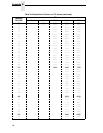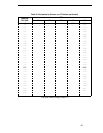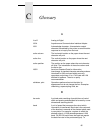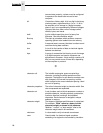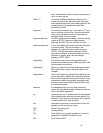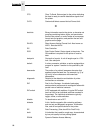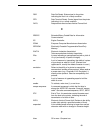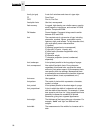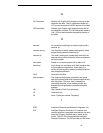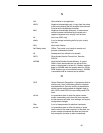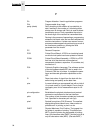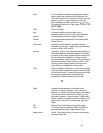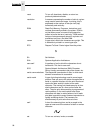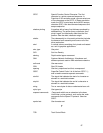
90
Appendix C
family (or type) A set of all variations and sizes of a type style.
FF Form Feed.
FIFO First In, First Out.
fixed-pitch fonts See font, monospaced.
flash memory A rugged, high-density non-volatile memory used to
store programs, instructions, and routines in PSA®
printers. Compare NVRAM.
FM Header Format Header. Command strings used to switch
between SCS and IPDS.
font The complete set of a given size of type, including
characters, symbols, figures, punctuation marks,
ligatures, signs, and accents. To fully describe a font,
you must specify seven characteristics:
1) typeface
2) spacing (proportional or monospaced)
3) type size (12 point, 14 point, etc.)
4) scale factor (character height/width ratio)
5) type style
6) character weight
7) character proportion (normal, condensed,
expanded).
font, landscape A font printed parallel to the long edge of a page.
font, monospaced Also called fixed-pitch fonts. Every character,
regardless of horizontal size, occupies the same
amount of font pattern space. All monospaced fonts
use specific pitch size settings. Monospaced fonts
are sometimes used when strict character alignment
is desired (tables, charts, spreadsheets, etc.).
font name See typeface.
font pattern The matrix of pixels which represents a character,
symbol, or image.
font, portrait A font printed parallel to the short edge of a page.
font, proportional A font in which the width of a character cell varies
with the width of the character. For example, /i/ takes
less space to print than /m/. Using proportional fonts
generally increases the readability of printed
documents, giving text a typeset appearance.
font weight The thickness of the lines making up a character. For
example, “bold” and “light” are different font
weights.
font width The measurement of the width of a character cell in
dots.



